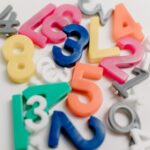Decimal to binary conversion is the process of converting a decimal number to its binary equivalent, where the binary number system has a base of 2 and only uses two digits (0 and 1). This conversion can be done by dividing the decimal number by 2 and keeping track of the remainder until the quotient becomes zero, and then arranging the remainders in reverse order to obtain the binary equivalent.
To convert a decimal number to binary:
- Divide the decimal number by 2.
- Write down the remainder (which will be either 0 or 1).
- Continue dividing the quotient (the result of the division) by 2 and writing down the remainders until the quotient becomes zero.
- Write the remainders in reverse order to obtain the binary equivalent.
For example, let’s convert the decimal number 27 to binary:
- 27 divided by 2 gives a quotient of 13 with a remainder of 1. Write down the remainder: 1.
- 13 divided by 2 gives a quotient of 6 with a remainder of 1. Write down the remainder: 1.
- 6 divided by 2 gives a quotient of 3 with a remainder of 0. Write down the remainder: 0.
- 3 divided by 2 gives a quotient of 1 with a remainder of 1. Write down the remainder: 1.
- 1 divided by 2 gives a quotient of 0 with a remainder of 1. Write down the remainder: 1.
The remainders in reverse order are 1, 1, 0, 1, 1, which is the binary equivalent of 27: 11011.
This method can be used to convert any decimal number to binary. Note that the maximum number of bits required to represent a decimal number in binary is log2(n), where n is the decimal number.
Exemple in Javascript code:
function decimalToBinary(decimal) {
return (decimal >>> 0).toString(2);
}Exemple in C# code:
public string DecimalToBinary(int decimalNumber)
{
if (decimalNumber == 0)
return "0";
else
{
string binary = "";
while (decimalNumber > 0)
{
int remainder = decimalNumber % 2;
binary = remainder.ToString() + binary;
decimalNumber /= 2;
}
return binary;
}
}
